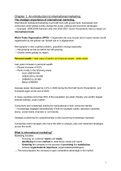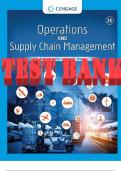Samenvatting
Summary CE8 | International Marketing Strategy: Analysis, Development and Implementation |Chapter 1 | ISBN: 9781473778696 |9e editie
- Instelling
- Hogeschool Van Amsterdam (HvA)
Samenvatting International Marketing Strategy: Analysis, Development and Implementation Hoofdstuk 1 9e editie ISBN: 8696 Ook te gebruiken voor: CE8: Internationale Marketingstrategie (2000CE8E22) Oefenvragen +antwoorden ook beschikbaar, zie mijn account
[Meer zien]














